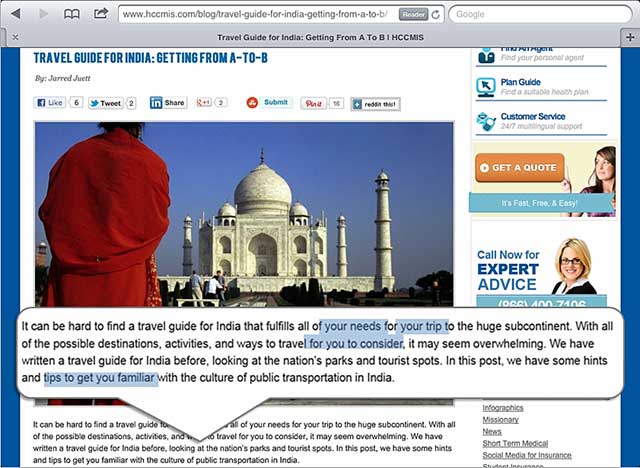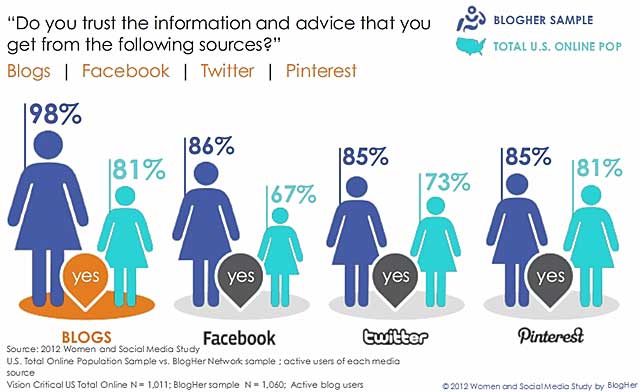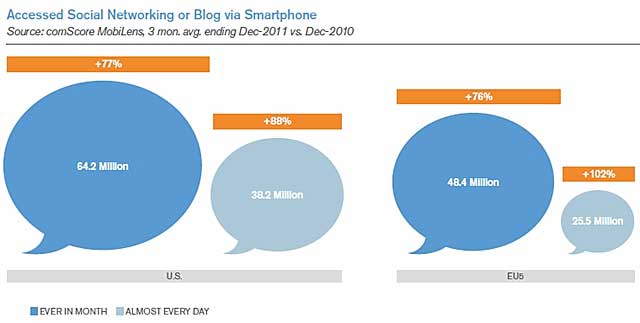Creating consistently engaging and fresh content for any company's blog is no easy task. Blogging is about building trust with your potential clients, and company blogs that offer valuable information with a fresh perspective are more likely to hook their audiences and turn readers into customers.
But even the most thoughtful corporate bloggers can get stuck from time to time. If you think it's time to rethink your company blogging strategy, follow the following five quick tips to build your audience and make your company blog worth reading.
Tip 1: Keep it about the reader
Write your blogs for your readers, not for yourself, and approach every topic you choose from the perspective of your audience. What are the questions your customers typically ask? Start there and use your experience with clients to begin writing content that is both useful to the reader and easy to understand. Skip the jargon and hot buzzwords.
Your readers are coming to you because they believe you offer a unique opinion, and your personal touch will get lost if your content is full of jargon or industry clichés. Talk in their language and make it very clear the content is for their benefit.

Of course, if your ideal reader is an expert in the field, feel free to use more technical language. But, in most cases, you should make an effort to convey your ideas in a way that is accessible to a range of readers. For example, the travel blog I manage has an international audience, and many of its readers speak English as a second language. We therefore target a lower reading level and make sure our language is simple and conveys a compelling message without getting too technical.
Tip 2: Focus on expert tips
Readers love knowledge they can immediately put to use, so offer helpful, actionable advice based on real-world experience. Your readers should come away from your blog having learned something.
If you are not an expert yourself in a particular field, find experts and learn from them. See what they are writing about, absorb their knowledge, and share their tips. Better yet, invite those experts to share their knowledge on your blog as guest bloggers. Allowing independent experts to write for your blog can provide a much needed fresh perspective and may result in their recommending your products or services.
In a recent study, female social media users said they trusted recommendations on blogs more than those on other social media channels.

Tip 3: Branch out
You certainly need to focus on what you know first, but finding a niche for your blog is also important. If you began your blog with just one or two specific categories, start thinking about other general areas of interest relevant to your company that you could begin to write about. Explore other industry blogs and take note of the topics they don't cover that your blog could. By branching out into other, similar topics, you will be better equipped to keep your content fresh and unique.
Tip 4: Be visual
A long jumble of nothing but text in a blog post can be intimidating to a reader. Often, readers will look at a blog post, and if it appears too long or daunting to read, they will skip it.
Use eye-catching images to break up blocks of text and keep the reader interested throughout your posts. Be sure to invest in unique, high-quality images, and stay away from predictable stock photos. Also, an occasional chart or graph might help your more visual readers better absorb your ideas.
Another factor to keep in mind is that many of your readers may visit your site via a mobile browser. According to a recent study by comScore (registration required), "in the US, 64 million smartphone owners accessed social networking or blog destinations via their mobile device in December 2011, an increase of 77% from the previous year," [this (and other growth percentages) means nothing without a beginning and end date specified]with more than half of mobile social networkers accessing blogs on a near-daily basis!
Make sure your site looks as great for mobile users as it does for those visiting from desktop browsers.

Tip 5: Save the sales pitch
No one comes to a blog to read a sales pitch. Visitors come to read interesting and engaging information.
In e-commerce, we talk a lot about the AIDA conversion funnel ("AIDA" stands for Awareness, Interest, Desire, Action), which guides potential customers from awareness of a product to an initial interest in it to a desire for it and, eventually, to the action of buying it. The aim of a corporate blog is to drive awareness. Although the temptation is great to put quick sales pitches into your content, be careful. If your posts become too focused on making sales, you will lose your readership.
Use your blog educate your readers and establish yourself and your company as credible and trustworthy. As readers are drawn in by your content, they will come to trust your buying recommendations and act accordingly.
* * *
In the end, being authentic is the most important part of keeping any corporate blog interesting. Speak from your experience. Offer valuable content. Make your blog accessible and engaging with clear, conversational language and good visuals. Give your readers what they want, and they will come to trust you. The payoff will be a larger readership for your blog, better customer engagement, and, most important, more valuable conversions for your company.



